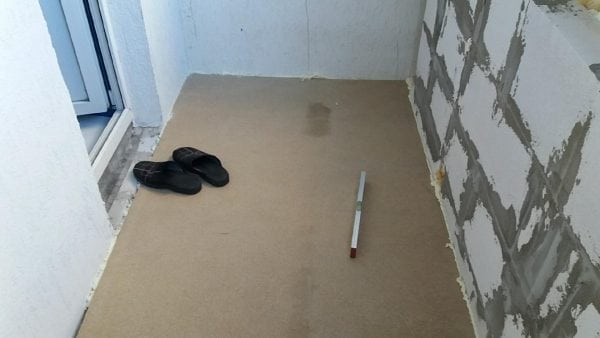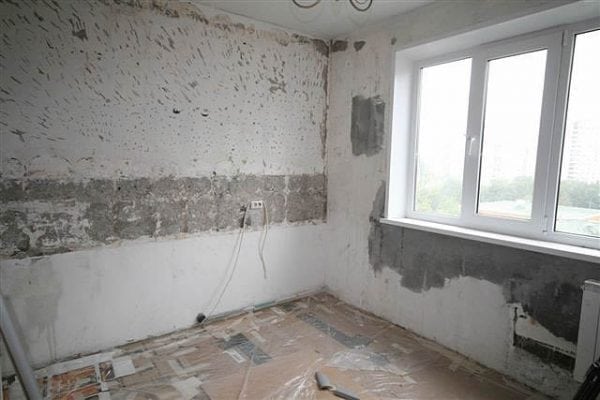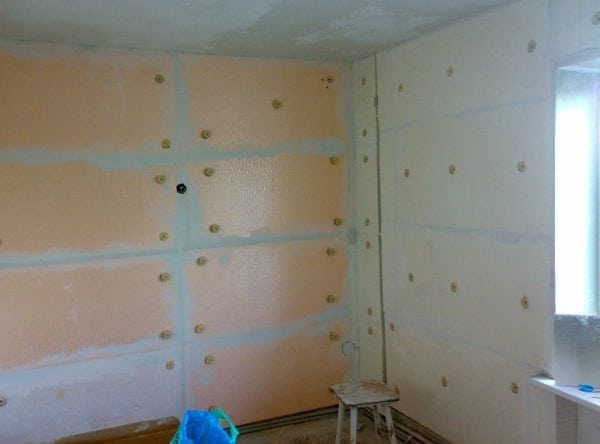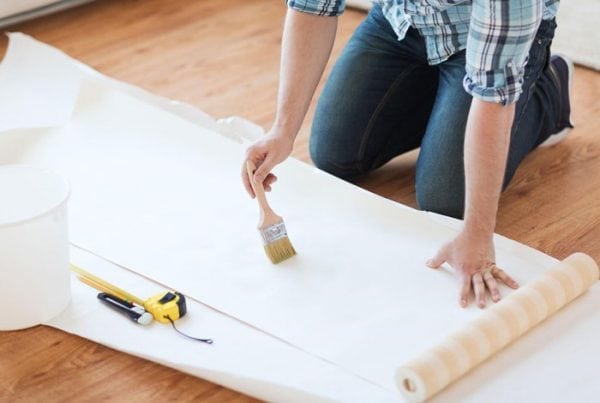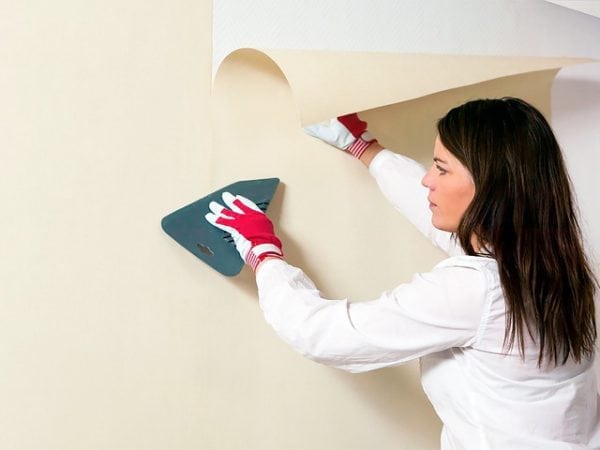Often it is necessary to insulate the corner walls of an apartment - in panel houses they can freeze if they go to the north side. An inexpensive, reliable material for this purpose is polystyrene, or polystyrene. But how to finish the wall after insulation, is it possible to glue the foam on the wallpaper? It is worth sorting out in more detail.
- Foam and wallpaper compatibility
- Dew point and wallpaper
- Preparation of the base for wallpaper
- Wallpapering on polystyrene foam and foam
- Gluing Tiles on Styrofoam
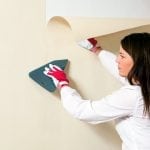
Foam and wallpaper compatibility
In addition to lining the walls of the apartment, polystyrene bonding is practiced on balconies, loggias, summer kitchens, verandas, attics. After successfully attaching foam structures, the question arises, what is the best way to finish the finish? In the recommendations for the heat-insulating material itself, it is usually indicated only what means can destroy it. Therefore, it is possible to stick wallpaper on foam, polystyrene foam, extruded polystyrene only by trial and error, experimenting.
The people are popular for finishing polystyrene with wallpaper. They give an attractive look, protect the insulation from destruction, rapid pollution. Polystyrene can be combined with wallpaper under the following conditions:
- following the technology of gluing the material;
- selection of the correct wallpaper glue that does not corrode the structure of the insulation;
- arrangement of normal ventilation, which will allow the walls not to get wet, and the wallpaper - not mold and not peel off.
If it is not possible to comply with the rules, it is worth considering another option of thermal insulation (mineral wool and drywall, roll insulation and panels).
to contents ↑Dew point and wallpaper
The service life of the wallpaper always depends on the quality of the preparation of the base and on the so-called “dew point”. In construction, this indicator is very important, it means the temperature at which condensate begins to appear in the air. The dew point depends on humidity - the higher the last, the closer it is to the actual temperature.
The thickness of the foam layer is determined by the fact how reliably the insulation will retain heat. If you choose the wrong thickness, there is a risk of condensation protruding on the walls. Constant dampness causes the growth of the fungus, which is dangerous to health.
It will help to find out the dew point calculation, which is worth ordering in a special company. You can clarify this yourself on the sites, but for this you will need technical documentation for the house. The location of the point is affected not only by the temperature and humidity in the apartment, on the street, but also the thickness of the walls of the apartment and the house as a whole, a number of other parameters. The dew point can move, sometimes it does not allow you to insulate the wall and glue the wallpaper - the work will be useless. Knowing the indicator, you can calculate the thickness of the foam, this is extremely important.
to contents ↑Preparation of the base for wallpaper
Since a quality base plays an important role in the subsequent service of wallpaper, laying of insulation must be given maximum attention.You can glue it on the wall using tile glue, mortar, mortar or other adhesive composition. Before buying, you need to make sure that the components of the product do not harm polystyrene foam. Tytan, Ceresit, Kreisel, Knauf, Penosil adhesives or special foam adhesives are well suited.
Before starting work, you need to prepare the surface:
- remove the remainder of the previous coating, thoroughly clean the surface, it is better to the base, get rid of dirt, dust;
- remove mold, be sure to treat the walls, floor with a special fungicidal composition (sold in construction stores);
- use putty, plaster, if there are large chips, cracks, defects;
- make the base completely dry, if necessary, dry it with a building hair dryer;
- carefully primed the wall 2-3 times, while selecting primers taking into account antiseptic and moisture repellent properties;
- wait a day to dry the surface again.
Next, you can begin to glue the insulation. Immediately use impregnation, reducing the consumption of glue, it makes no sense, they do not stick to polystyrene foam. It is worth going along the insulation sheet with a needle roller. Thermal insulation will be glued much better, the rate of adhesion with wallpaper will increase. Instead of a roller, some repairmen use grinding with a fine sandpaper, a grinding machine.
The foam is lubricated with glue, pressed against the wall, held for several minutes (indicated in the instructions). It must be laid by fitting the plates tightly. After complete drying, the joints are putty, on top for reliability, the material is fixed with dowels. Immediately before wallpapering, expanded polystyrene is primed.
to contents ↑Wallpapering on polystyrene foam and foam
How to glue the wallpaper on the insulation made? First you need to calculate and buy the required amount of material of the desired color. It is usually recommended to purchase vinyl or non-woven wallpaper, thin paper should not be glued onto the foam. The order of work is as follows:
- measure and cut a certain number of strips of material with a length of 10 cm more than the height of the walls (allowance for error in the measurements);
- for wallpaper with a pattern, the fitting rules should be followed;
- to spread glue; if a dry mixture is used, let it brew; to improve the quality of adhesion, many add a little PVA to the composition;
- cover the floor with polyethylene, cover the door with masking tape;
- smear the first strip, for thick wallpaper - give it a little soak in glue;
- continue gluing the strips end to end to each other.
to contents ↑Some masters recommend making a backing for wallpaper from old newspapers - stick it on the same tool as the wallpaper itself. This will help increase the life of the finish. There is another option - to include polystyrene puttying in the list of finishing works, for this use special glue for polystyrene foam (dry mix). Next, the wall is primed and the wallpaper is fixed.
Gluing Tiles on Styrofoam
It is possible to glue foam insulation not only with wallpaper. Even ceramic tiles are suitable for finishing it. The advantages of this technique are obvious:
- the exclusion of burnout of the coating from the sun;
- prevention of damage by rodents and crumbling;
- long service life, prevention of damage from wind, rain (on open verandas).
Is it possible to glue tiles on polystyrene foam? Yes, and such a finish lasts for many years. Polyfoam is mounted on the walls in the usual way. Next, a building mesh (reinforcing or fiberglass mesh) is attached to its surface, it is passed with glue and fixed with anchors. Then do the work like this:
- plaster the surface with elastic glue or cement mixture;
- grind the wall, apply a primer;
- they lay the tile on the foam traditionally, as is done on any wall, using high-quality tile glue (for example, Ceresit CM117);
- apply glue with a notched trowel, this will reduce the cost of funds.
As a result, the room will be insulated, heat loss will be minimal, energy consumption will decrease. Moreover, walls with such an option of decoration look original and serve more than 10 years.

